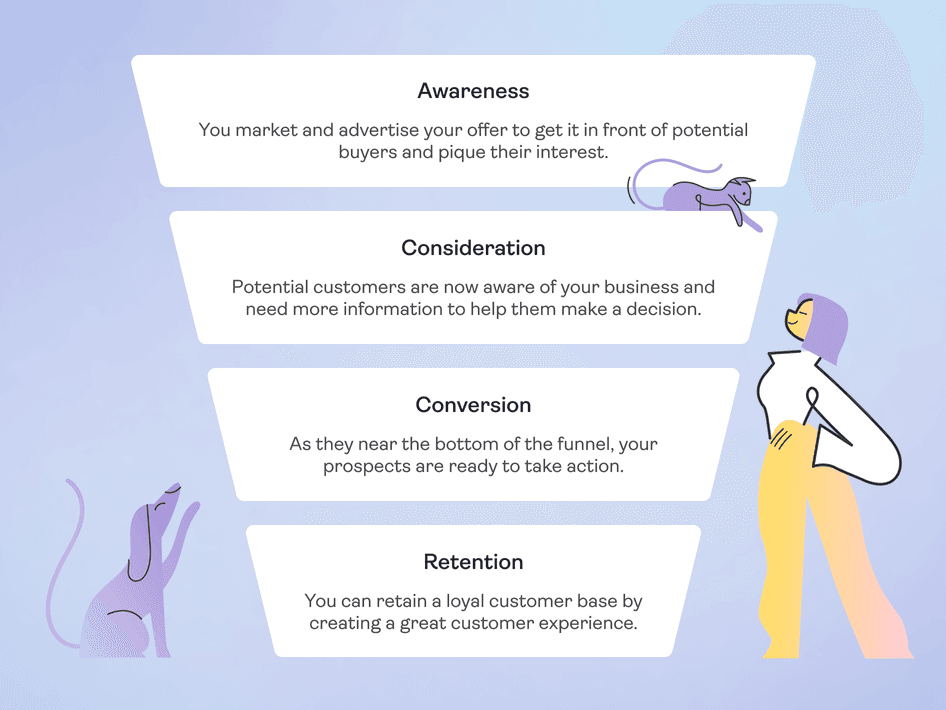The Ultimate Hookup Guide
Explore expert tips and advice on navigating the world of modern dating and hookups.
Player Acquisition Funnels: The Secret Sauce to Level Up Your Game
Unlock the secret sauce to mastering player acquisition funnels and skyrocket your game's success. Discover proven strategies now!
How to Build an Effective Player Acquisition Funnel for Your Game
Building an effective player acquisition funnel for your game is crucial to attracting and retaining a loyal player base. The first step in this process is to clearly define your target audience. Understanding who your potential players are can inform your marketing strategies and messaging. Utilize data analytics and market research to create detailed player personas that outline demographics, preferences, and behaviors. Once you have these insights, you can tailor your promotional material to resonate with your audience, ensuring that your acquisition efforts yield the best results.
Next, focus on creating engaging content to drive traffic into the top of your funnel. Use a combination of SEO strategies, social media marketing, and influencer partnerships to increase visibility and reach. Consider implementing a series of content offers, such as free demos or exclusive in-game rewards, to encourage potential players to provide their contact information. As players move further down the funnel, utilize targeted email campaigns and personalized messages to nurture these leads, ultimately converting them into dedicated players who enjoy your game long-term.

Counter-Strike is a popular tactical first-person shooter game that has captivated millions of players worldwide. It involves two teams, terrorists and counter-terrorists, competing to complete objectives or eliminate the opposing team. Players often look for ways to enhance their gaming experience, such as finding opportunities for rewards. You can check out the shuffle promo code to discover potential benefits while playing.
The Essential Components of a Successful Player Acquisition Strategy
In today's competitive gaming landscape, developing an effective player acquisition strategy is crucial for success. The first essential component is target audience analysis. Understanding who your potential players are—age, gaming preferences, and geographic locations—allows you to tailor your marketing efforts specifically to their interests. Utilizing tools such as social media insights and analytics platforms can help you gather valuable data. Once you have established your target audience, the next step involves creating compelling content marketing campaigns that resonate with them. This includes engaging blog posts, eye-catching videos, and interactive content that captures players' attention and drives them towards your gaming platform.
Another critical component of a successful player acquisition strategy is performance tracking and optimization. Employing tools like A/B testing can help you analyze different marketing approaches, ensuring that your efforts are producing the desired results. It's essential to monitor key performance indicators (KPIs) such as player retention rates, conversion rates, and cost per acquisition. By continually assessing and refining your strategy based on these metrics, you can enhance your campaigns for better outcomes. Finally, don't overlook the importance of building a strong community around your game; social proof and word-of-mouth can significantly boost your player acquisition efforts and foster a loyal player base.
Top 5 Common Mistakes in Player Acquisition Funnels and How to Avoid Them
When it comes to player acquisition funnels, many businesses fall victim to a few common missteps that can significantly hinder their growth. One of the most critical mistakes is failing to define a clear target audience. Without a well-defined demographic, your marketing efforts may reach the wrong players, resulting in wasted resources and low conversion rates. To avoid this, conduct thorough research to understand your ideal player profile and tailor your messaging accordingly.
Another prevalent error is neglecting to track and analyze funnel performance. Data-driven decision-making is essential for optimizing your player acquisition strategy. Use analytics tools to monitor key metrics, such as user engagement and drop-off points within your funnel. Regularly review this data to identify areas for improvement and test various strategies to enhance user experience and boost conversion rates.